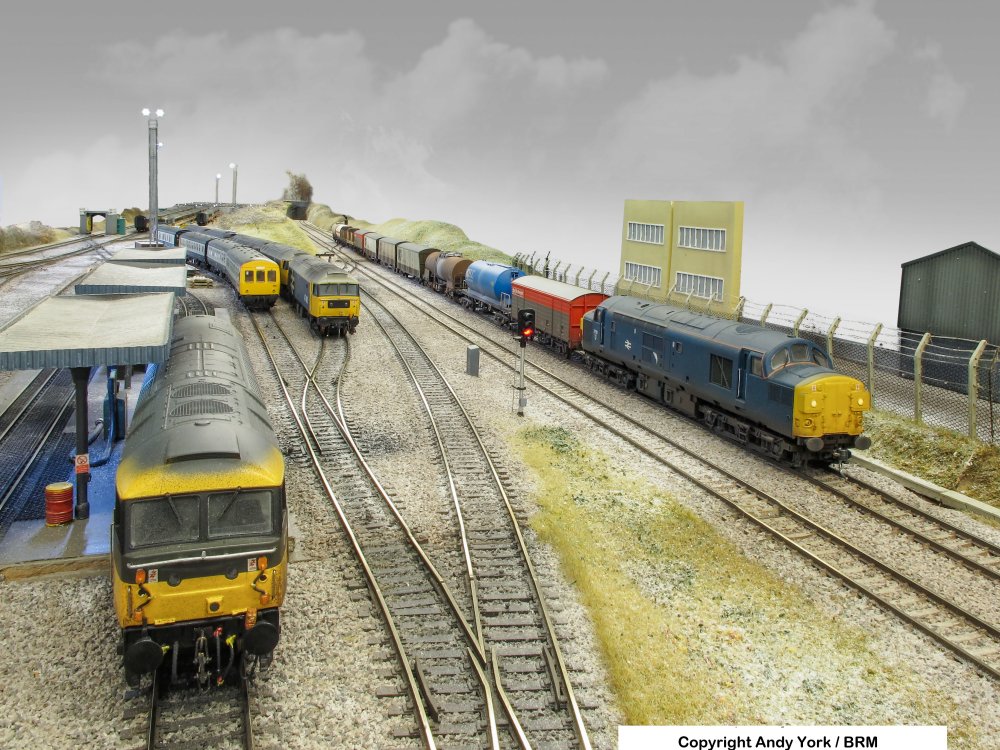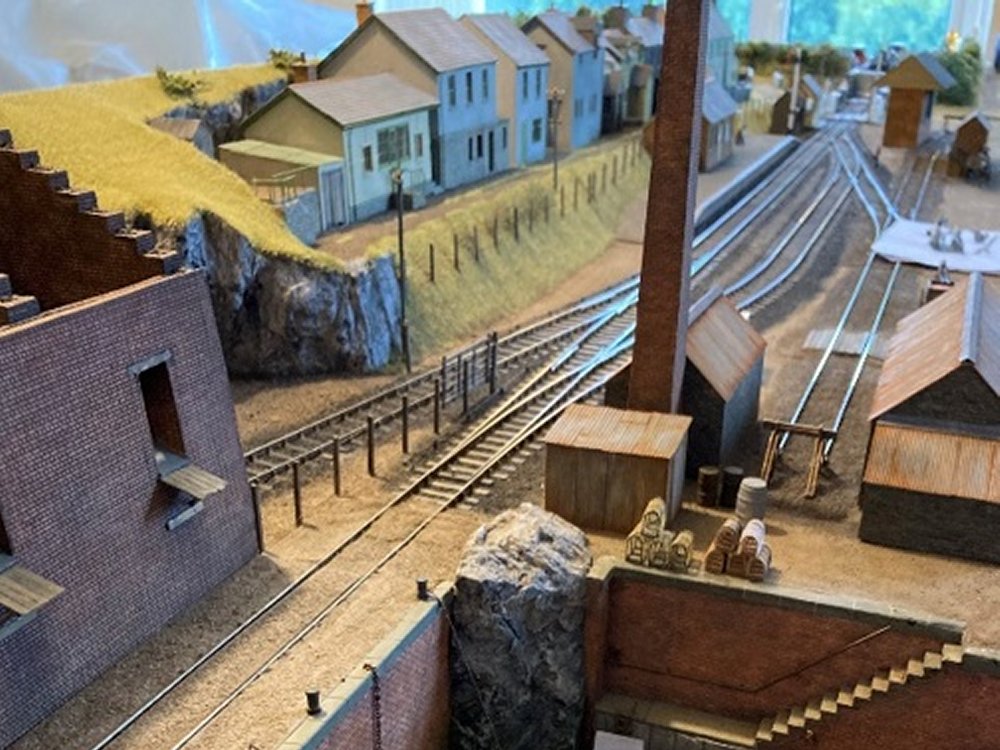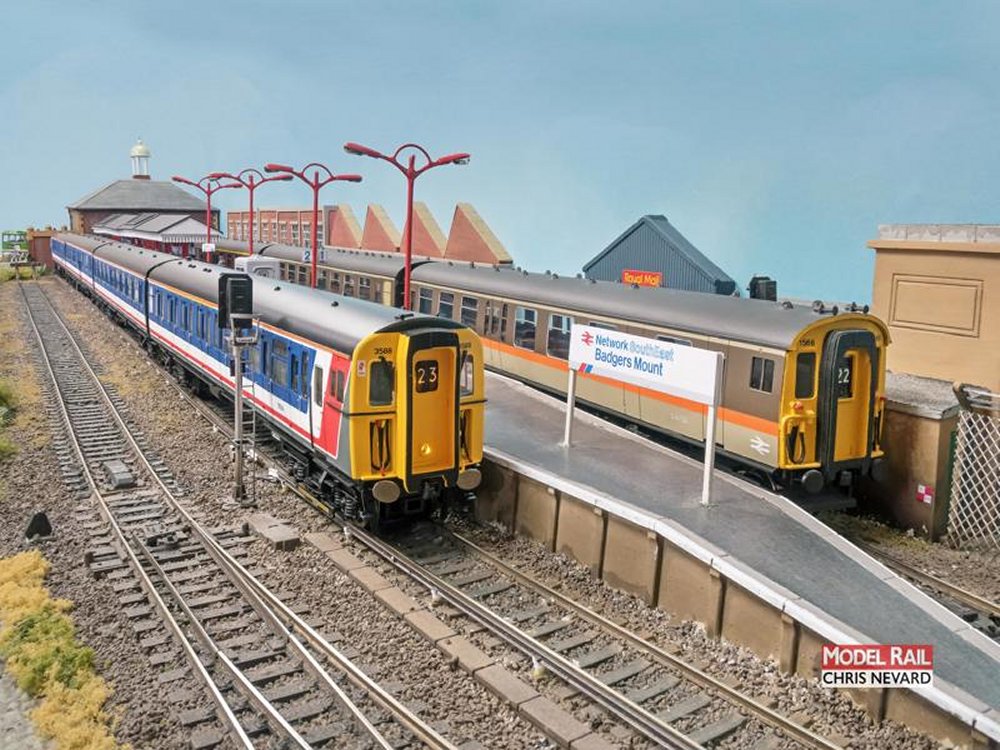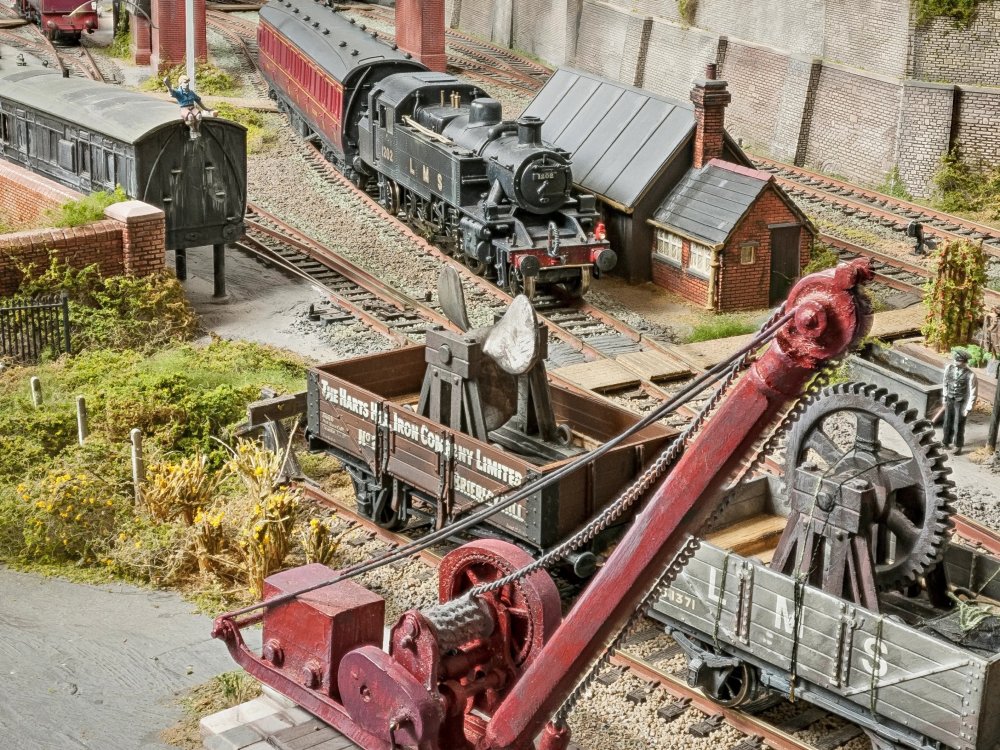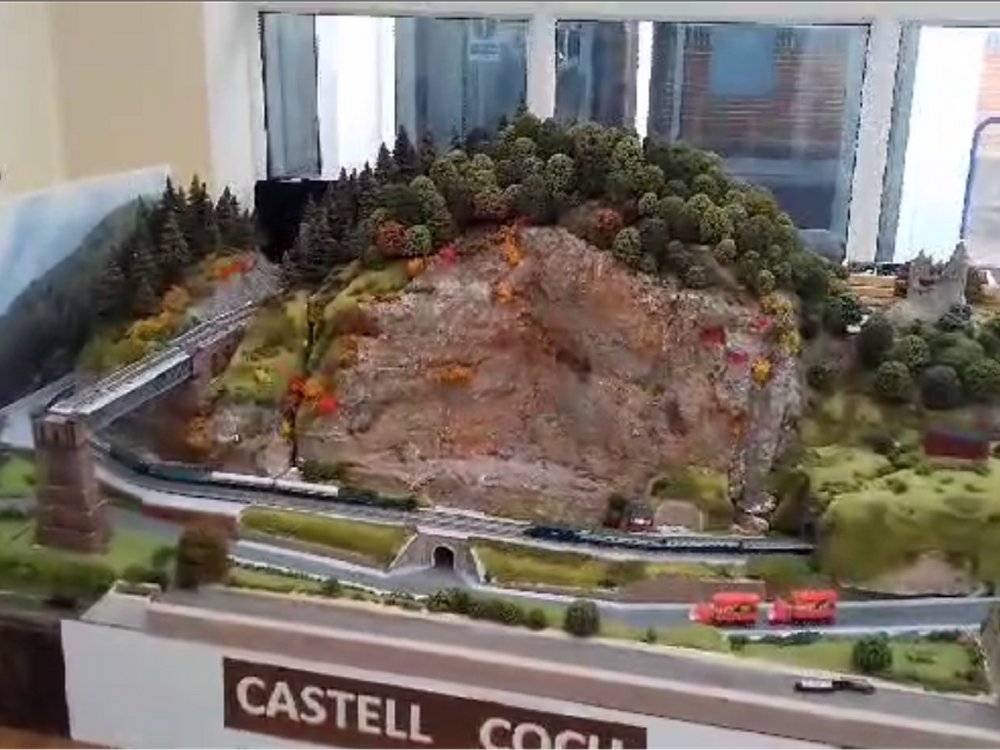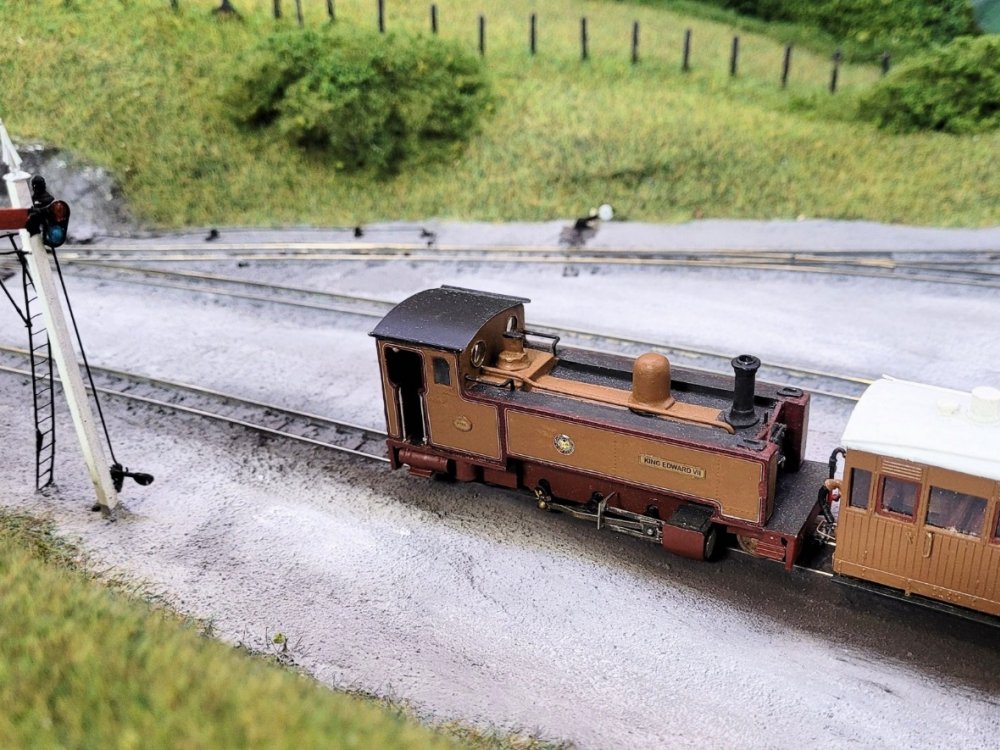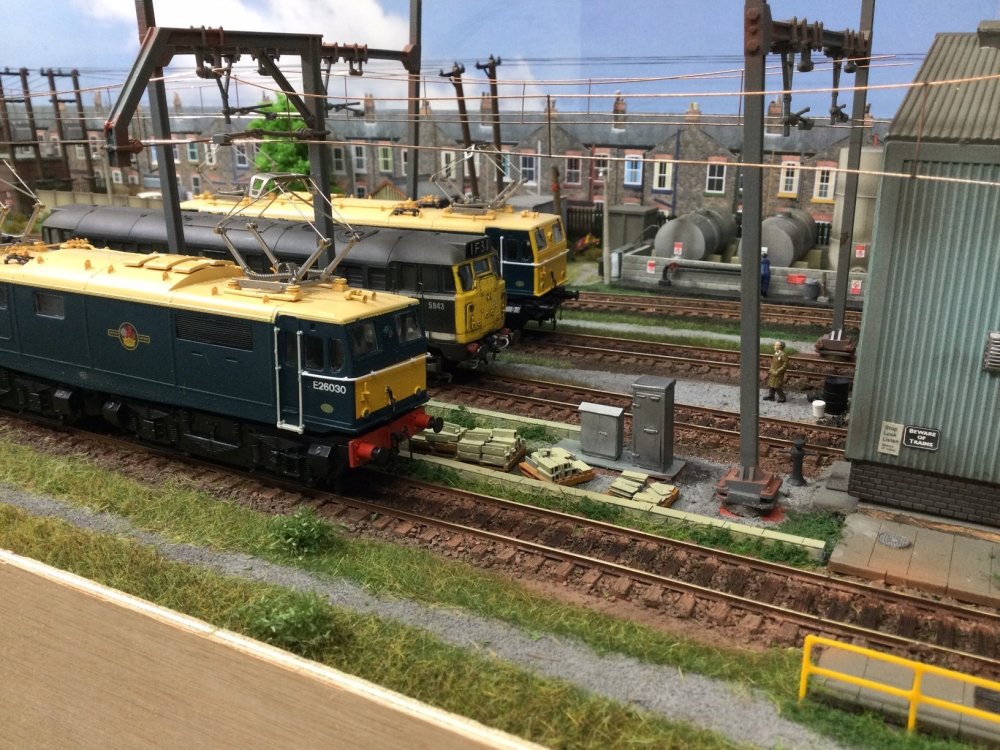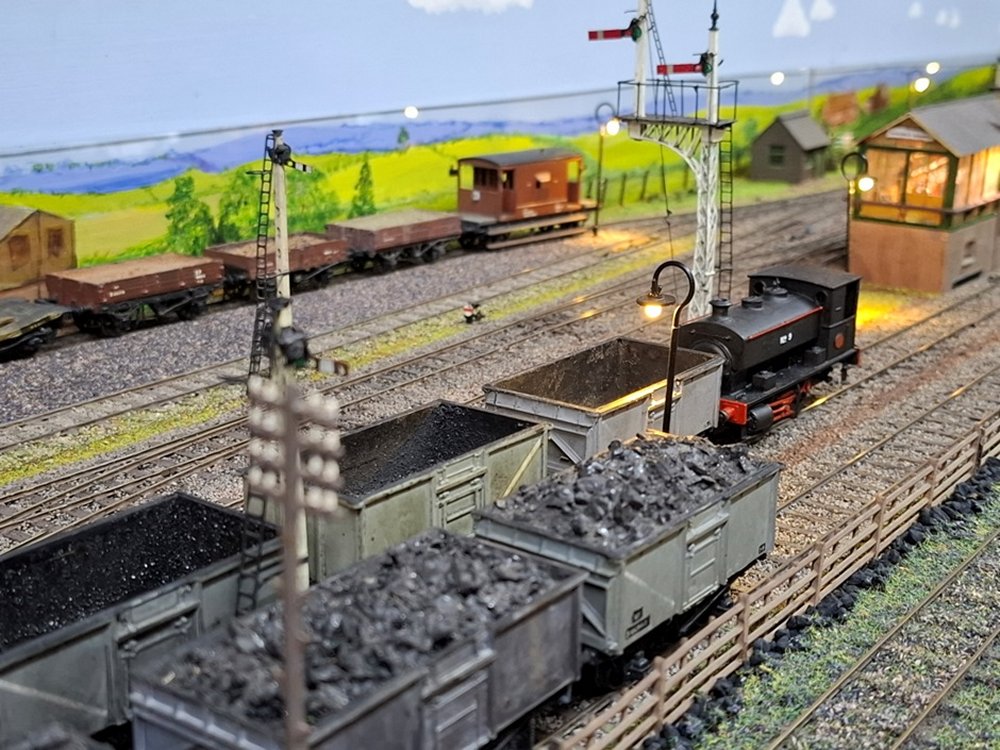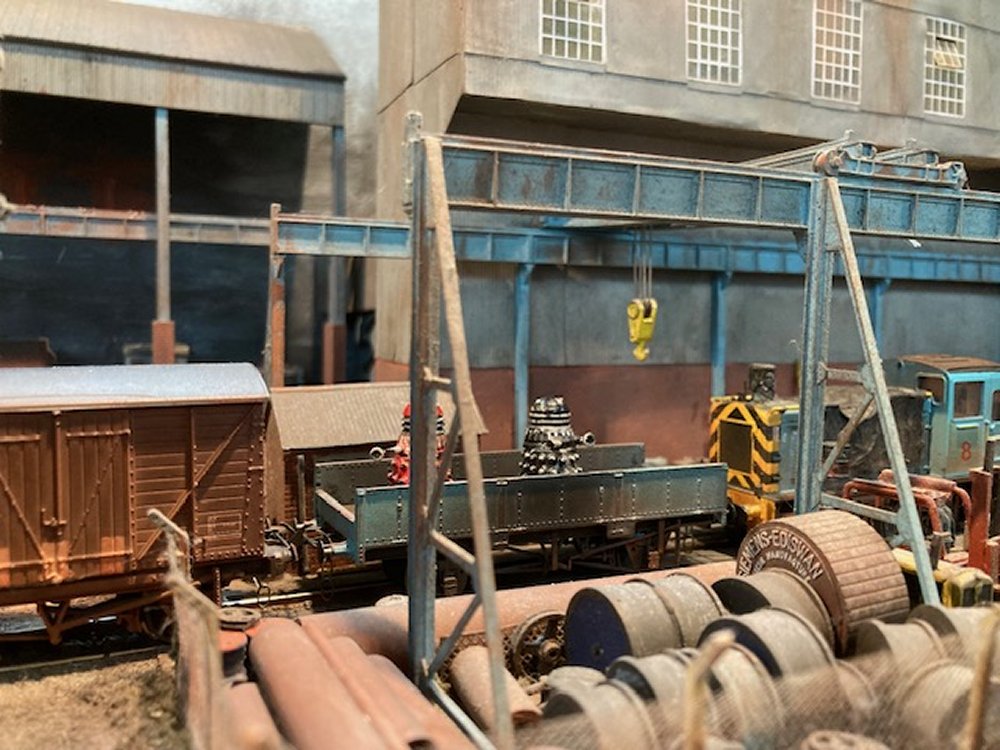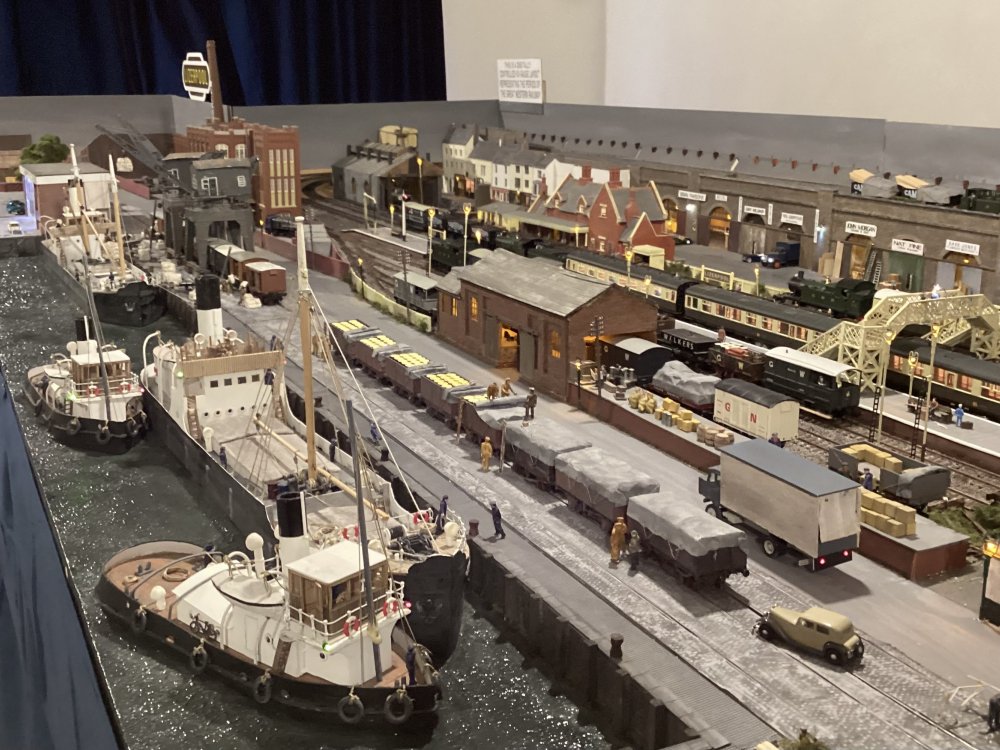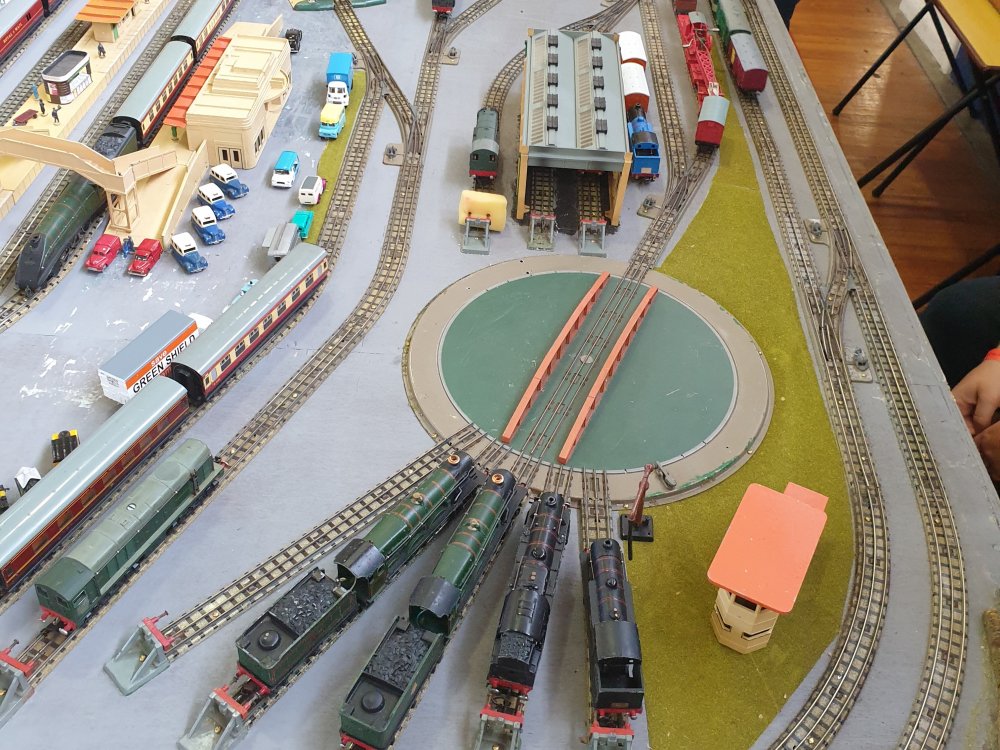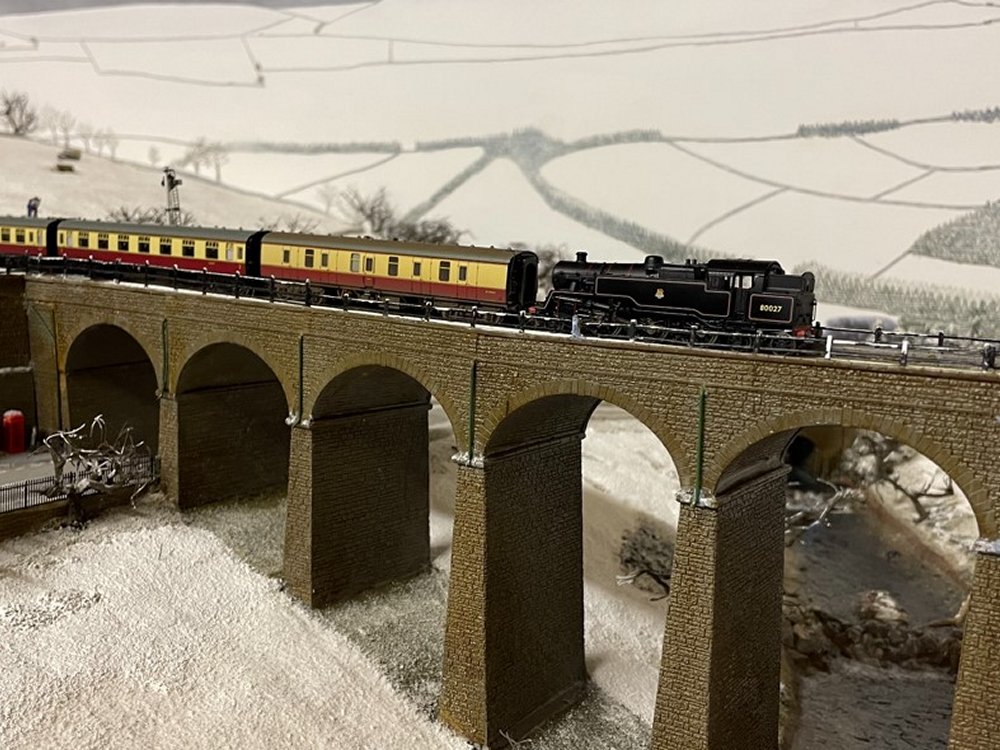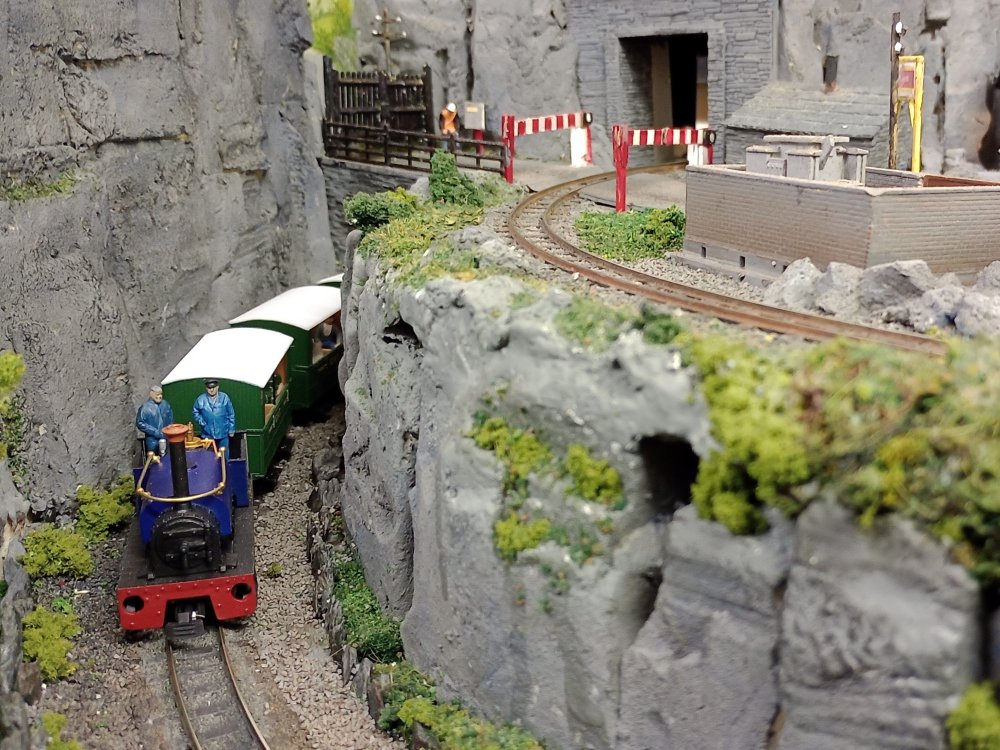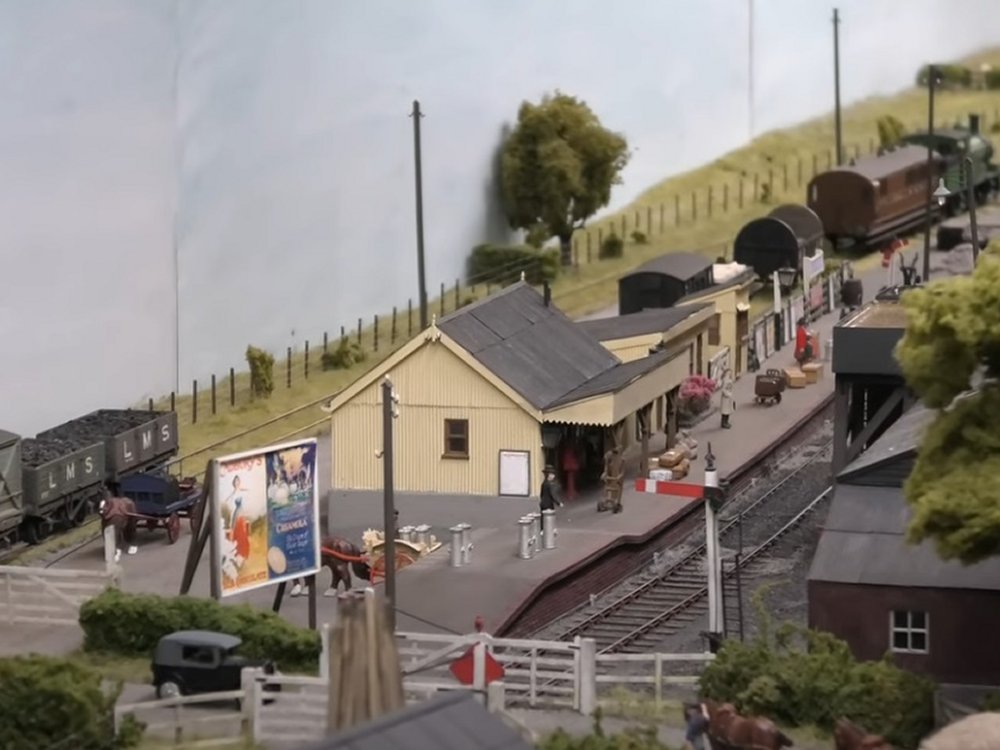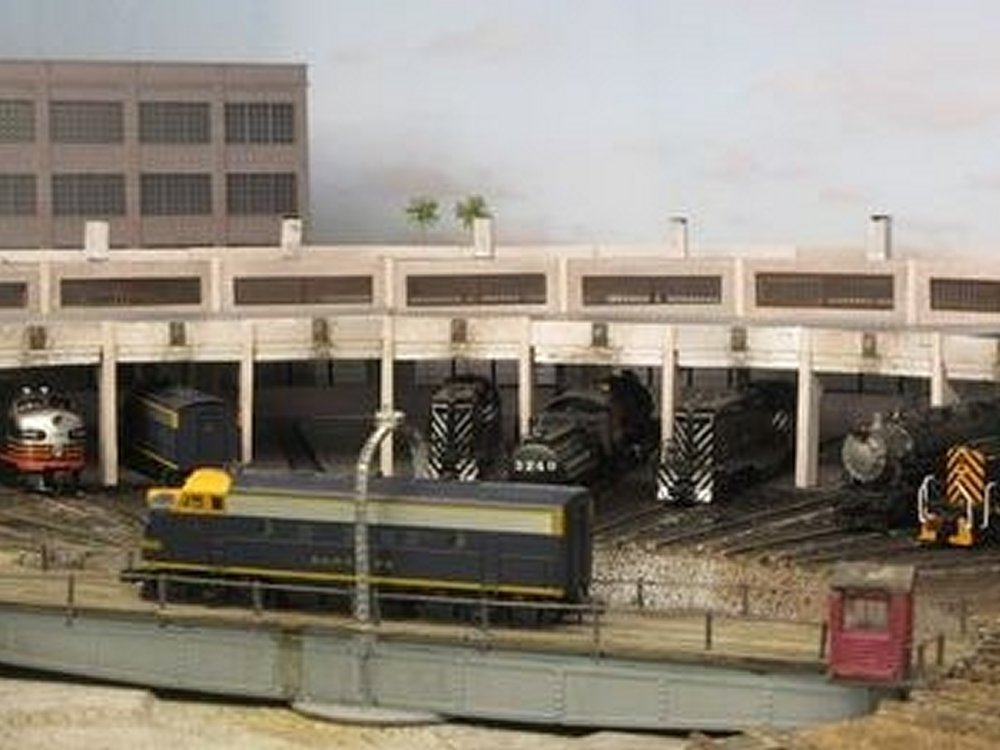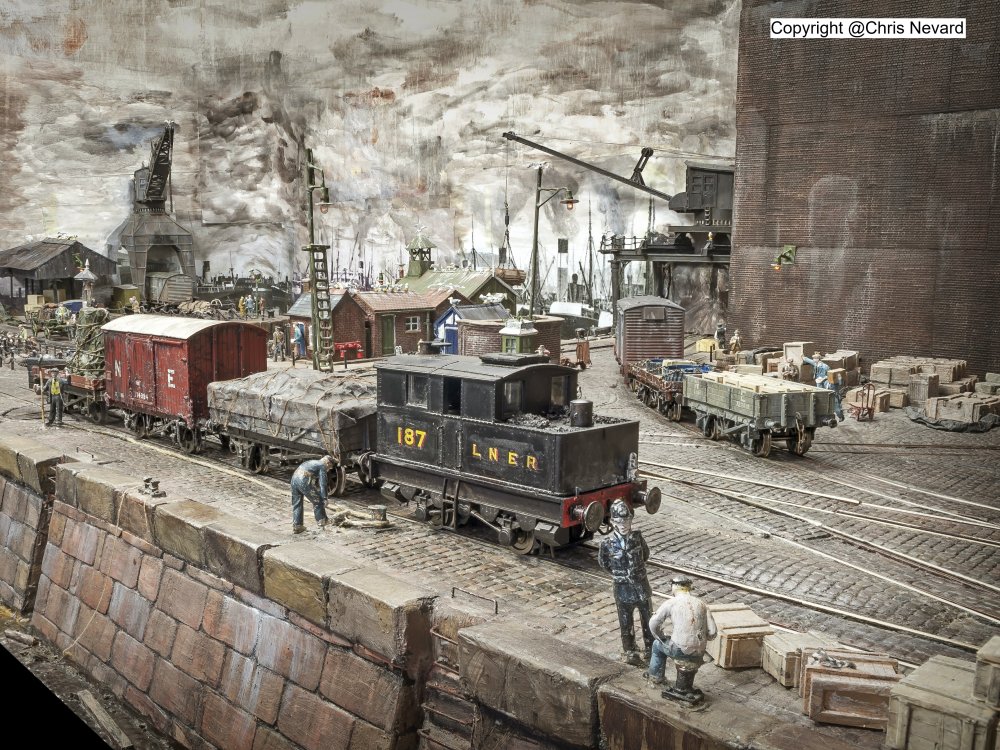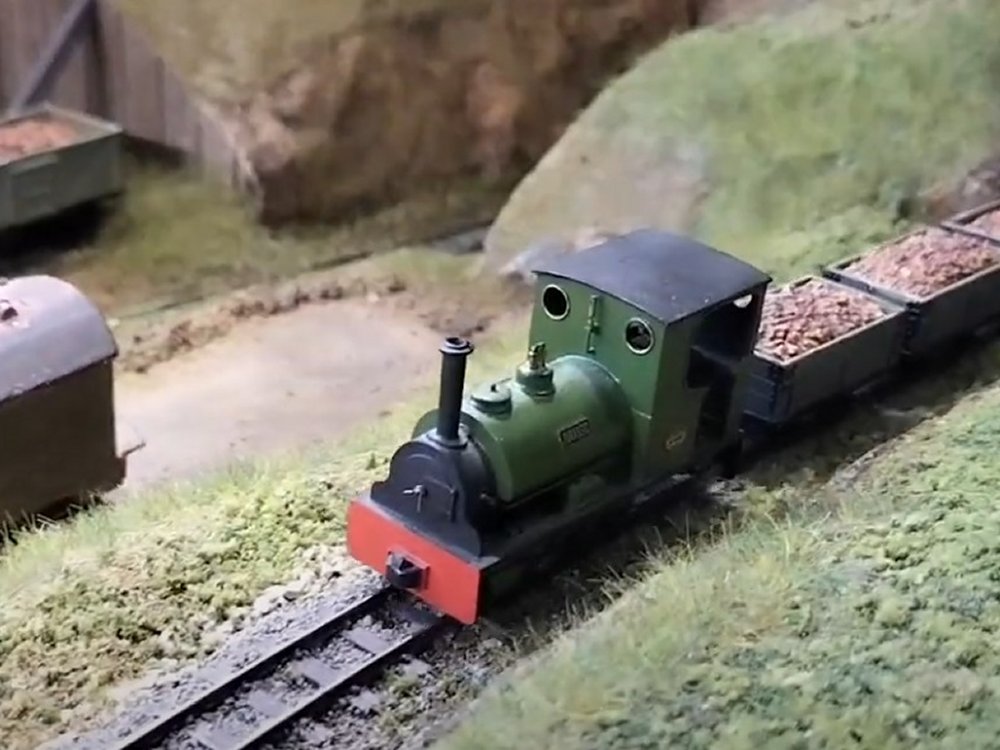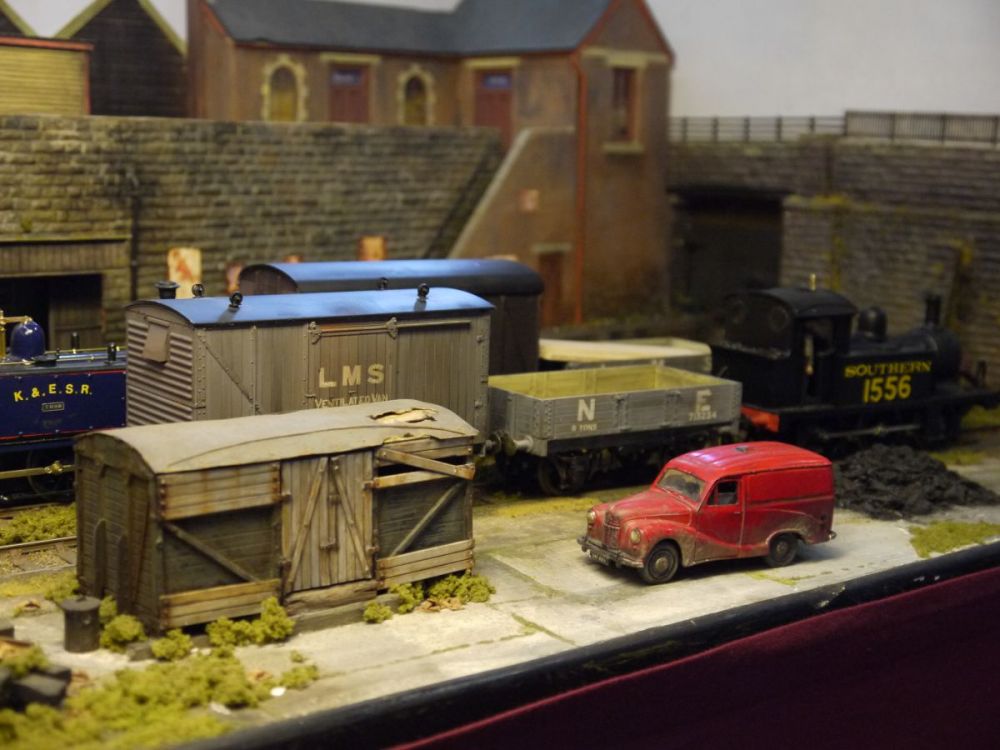Exhibitors
Aberdeen Kirkhill Traction and Rolling Stock Depot is a fictitious layout set in a real location. We have assumed that the site of the existing Aberdeen Clayhills Depot has been sold for city centre redevelopment (it being in a prime location) and the depot is relocated to the site of Craiginches Yard, a few miles to the south. This is a scheme that was considered by British Rail during the 1980s so it is a real "what if".
The layout is set in the late 1980s and utilises traction and rolling stock which is authentic to the period. We are running a sequence which is based on the working timetable from winter 1987-88.
The idea of this layout is to attempt to show the amount of work that went on behind the scenes during a typical day and night at a traction and rolling stock maintenance depot in the late 1980s.
Many of the trains you see passing on the main line have either recently left the depot, or will shortly arrive there.
Recent enhancements to the layout are working colour light signals, the ability to run a fully automatic sequence of trains on the mainlines and the addition of an HST power car repair shed.
This layout was dreamed up by combining the cottages of the Pembrokeshire fishing village of Abercastle with the harbour at Porthgain to make a railway.
Sadly the other standard gauge railway companies ran out of steam before reaching the coast at St. David's, so in this world the TVR & GWR put aside their differences and built and operated it as a joint venture!
Badgers Mount is a compact portable exhibition depicting a small outer London terminus set in the Network SouthEast era between the mid-1980s and mid-1990s featuring third rail electrification. The line was opened by the Southern Railway as a short branch from Knockholt to a terminus built to serve an anticipated local housing development and the nearby Army Ordinance depot at Fort Halstead.
The layout is operated from the rear but also from the front and the owner encourages visitors, in particular children, to have a go at driving a train from the front.
Set in the period 1930's-1940's in an area where coal is brought down river in small barges for onward transport to the coast. The railway was built up in the hope that this would develop around the quay and promote growth in the town and surrounding area.
As can be seen by the large warehouses and brewery this never fully developed the town as hoped but the brewery and farming supplies are still brought in and the local brew and produce taken out via the railway.
LMS and GWR continue to move these commodities. Rolling stock is ready to run and kit built. The buildings are mainly scratch built using various methods and materials.
A Z gauge layout depicting a compressed view area of the Walnut Tree Viaduct including Castell Coch and part of the Cardiff railway.
The real railway opened in 1911, closed to passengers in 1931 and the track was lifted in 1953.
Modellers licence shows how the railway might have looked today had the A470 not been built.
The layout is still being constructed to the photos below as of real lie photos of the area, photos of layout will be uploaded once available.
Devils Bridge is the terminus of the 2ft gauge Vale of Rheidol Railway in Mid Wales.
Here it is modelled in full scale size as it was in the early 1900s soon after its opening. The line passed to the Cambrian Railways in 1913, the GWR in 1923 and then BR in 1948 before being sold into preservation in 1988. The rolling stock is all kit built.
Gorton Lane in OO scale is a fictitious location situated somewhere between Manchester and Sheffield on the long-lamented Woodhead Route across the Pennines using 1500 volts DC overhead electrification.
The era is the 1960s and features a small and rather run-down depot stabling Class 76 and 77 electric locomotives plus various Midland Diesel types. This layout is a nod to the "Woodhead" featuring full DCC and sound operation.
Hardwick Grange was built in the 1990's by the respected modeller Frank Dyer. After Borchester and Borchester Market this was his last layout and features an imaginery town on the edge of the "Dukeries" in East Nottinghamshire. The Great Northern railway built the branch from Tuxford in about 1860 to mainly serve Hardwick Main Colliery.
The period depicted is 1957-58 when BR steam and diesel locomotives handled a variety of rolling stock. The operational sequence starts at 07.00 and runs through to mid-evening, embracing the varying types of traffic at different periods of the day.
Apart from passenger traffic there is a small amount of local goods traffic which can be seen entering and leaving the small yard. One of the main features is the private colliery line, connecting the pit-head with the railway company's sidings. Regular trains of empty wagons for the mine can be seen arriving from the main line, while assembled full wagons depart at regular intervals to find their way to the great yards at Doncaster.
The model is fully signalled in accordance with prototype practice. Signalling and safety rules are observed by the operators as far as possible on a small layout. This includes the proper cautionary approach of trains into a terminal station such as this.
This layout depicts a small corner of an fictitious Iron and Steel works in the South of Bristol in the 1970's. Iron Mould Lane is a real place and runs through the works with the overheads and conveyors crossing to other parts of the site.
Most of the large buildings are scratch built from plasticard or plywood shells but the Blast Furnace is a modified Walthers kit. Rail traffic varies includes torpedo wagons carrying the molten iron from the Blast Furnace, crucible wagons with slag for the tip and works engineers wagons on internal use.
The layout is a fictional South Wales dock set in the immediate pre-nationalisation era, just before the demise of the Great Western railway. It is modelled as a double-track mainline continuous run with a single through goods and passenger and a branch line.
The main station includes a goods yard and a loco shed. Above the arches a goods line runs continuously, controlled by a shuttle unit. Most of the main buildings are scratch built apart from the large factory which is a stretched kit.
Both roads have magnet operated lorries to add movement interest and the cranes simulate the loading and unloading of a ship.
Moors View is a 'N' gauge layout set in deep winter and is modelled on the ex LSWR (SR) mainline from Exeter-Plymouth & based somewhere between Okehampton & Tavistock. The line skirted the northern & western edges of Dartmoor & between Lydford Jct & Mary Tavy it ran alongside the GWR line. On this day Devon has been hit hard with storms on the south coast & snow over the Moors so with the ex GWR line made impassable at Dawlish the P/way crews have worked hard to keep the former LSWR line open after heavy snow.
We start on a Saturday in 1955 where the viewers will see prototypical stock from ex SR, GWR & BR standards and we end on Sunday in 1990, spanning 35 years, so we hope we have something for all tastes.
Quarryside Halt is the latest OO9 exhibition layout from the Blaenavon Model Railway Club. It is a highly detailed quarry layout on two levels featuring 3D-printed locos running on Kato chassis.
It features two independent loops with passing sidings and up to four trains running on the layout. The passing loop on the lower level contains a station. The majority of buildings and scenery are built from scratch. It measures 4' 6" x 2' 6"
Rolvenden is a Colonel Stephens Light Railway modelled in P4. It reproduces as accurately as possible the station of the same name on the Kent and East Sussex Railway in the mid 1920s. Using operators licence the features outside of the station confines are based on typical Kentish structures such as the Windmill, Oast House and Hop Garden.
Many of the trains run as mixed trains pausing to shunt the yards as they proceed through the station.
Roundhouse is a North American 'N' gauge micro-layout that forms part of a Southern Pacific and Santa Fe joint line. With imagination and a little bit of theatre, a lack of space should not be a complete constraint on model railways.
This little layout has no points at all. It is an opportunity to display some N scale stock collected over the years and to experiment with some 2mm modelling ideas. Track is a mixture of 2mm finescale, Atlas and Peco (in the hidden section). The structures are a mixture of scratch built, doctored kits and commercial detailing.
Trinity Dock Street Bridge is a small highly detailed and unusual layout set on a cold, dank and dismal Monday morning in early February 1939, amongst the busy inner town docks of Hull, Yorkshire, on the English Northeastern coast.
The tracks are inlaid into thousands of stones setts with many points and tight radiused curves as they connect the various warehouses, quays and wharves with the large marshalling yards to the west of the city where the trains arrive from and depart to many destinations across Northern England.
As the short trains are shunted around they rattle over the asymmetric swing bridge. The South Easterly wind is not only bringing the bad weather off the North Sea, but also the threat of war from the near continent.
The Welford Coppice '009' scale layout represents a typical Ironstone mining field from the 1950's. Raw ironstone is bought from the fields by a narrow gauge railway and is then tipped into standard gauge wagons for onward transportation to the exchange sidings.
A fuller explanation of Ironstone excavation is given on the layout.
Wood Street is an O gauge industrial layout inspired by typical urban shunting yards that could be found in many towns and cities in England. Structures and buildings are largely freelance although the layout's Wood Street derived from a road in the old town area of Swindon. The old town had rail access until the early 1970's.
Societies / Demonstrators & Displays
2mm Scale Association - Modelling at the scales around 2mm:1ft. This encompasses 2mmFS (2mm/ft, 1:152), finer scale UK N-gauge models (1:148) and finer scale US/European models (1:160). The scale has a long history as the smallest practical finescale standard
Cardiff Trolleybus Group - an local group, based in the South Wales, which was set up to recondition old trolly buses.
Dean Forest Railway - Show sponsor
Dean Forest Railway - Our 4 1/2 mile line runs through beautiful woodland and countryside offering visitors a chance to experience the relaxing pace of a typical country branch line. With our 5 stations along the way, you will have time to explore the local area, taking in woodland walks and country pubs or venturing down to the Severn Estuary to explore Lydney Harbour with its fantastic views across the Severn. www.deanforestrailway.co.uk
EM Gauge Society emgs.org
Fred Lewis - Demonstrating High End Loco Construction - www.welshwizardlocoworks.co.uk
Great Western Study Group - Promoting and encouraging interest, research and modelling of the Great Western Railway. www.gwsg.org.uk
Model Electronic Railway Group - an international group, based in the UK, which was set up to promote interest in the use of electronics and computers to all aspects of railway modelling. www.merg.org.uk
N Gauge Society www.ngaugesociety.org
PPM Models - Demonstrating 3D printing www.ppm-zgauge.co.uk
RCTS (Railway Correspondence and Travel Society) rcts.org.uk
The South Wales Modellers club started 40 years ago as the South Wales Branch of the Miniature Armoured Fighting Vehicle Association (MAFVA). Recently the modelling interests of members widened to include subjects other than armoured fighting and related vehicles. Accordingly, in February 2025 we changed the name of our club to South Wales Modellers, to have a wider appeal to modellers in this region. www.southwalesmodellers.co.uk
The Welsh Railways Research Circle www.wrrc.org.uk
Also sponsored by the following
No stand at showCardiff Model Engineering Society - Show sponsor
Cardiff Model Engineering Society - Miniature train rides - Steam, Diesel, Electric and Tram rides in delightful parkland at Heath Park in the capital city of Wales. - www.heathparkminiaturerailway.co.uk - Facebook
